Understanding how to hang a bike is fundamental for any cyclist looking to optimize space and maintain their equipment efficiently. Hanging your bike efficiently can transform your storage space, offering a neat solution that maximizes room and accessibility.
It not only safeguards your bike from potential damage but also ensures it’s always ready for your next ride. By hanging your bike, you avoid clutter, keep your living area orderly, and protect your bike from the wear and tear of everyday life.
This smart storage solution is ideal for those seeking a practical way to keep their bike in top condition while reclaiming valuable floor space. In this blog, we will discover how to hang a bike. By the end, you’ll be equipped with the knowledge to safely store your bike, prevent unnecessary damage, and maximize your available space.
Types of Bike Hangers
When it comes to bike storage, the variety of hangers available can cater to different needs and spaces.
Wall-mounted hangers are a popular choice for their space-saving design and ease of installation; however, they require a sturdy wall and may not accommodate heavier bikes.
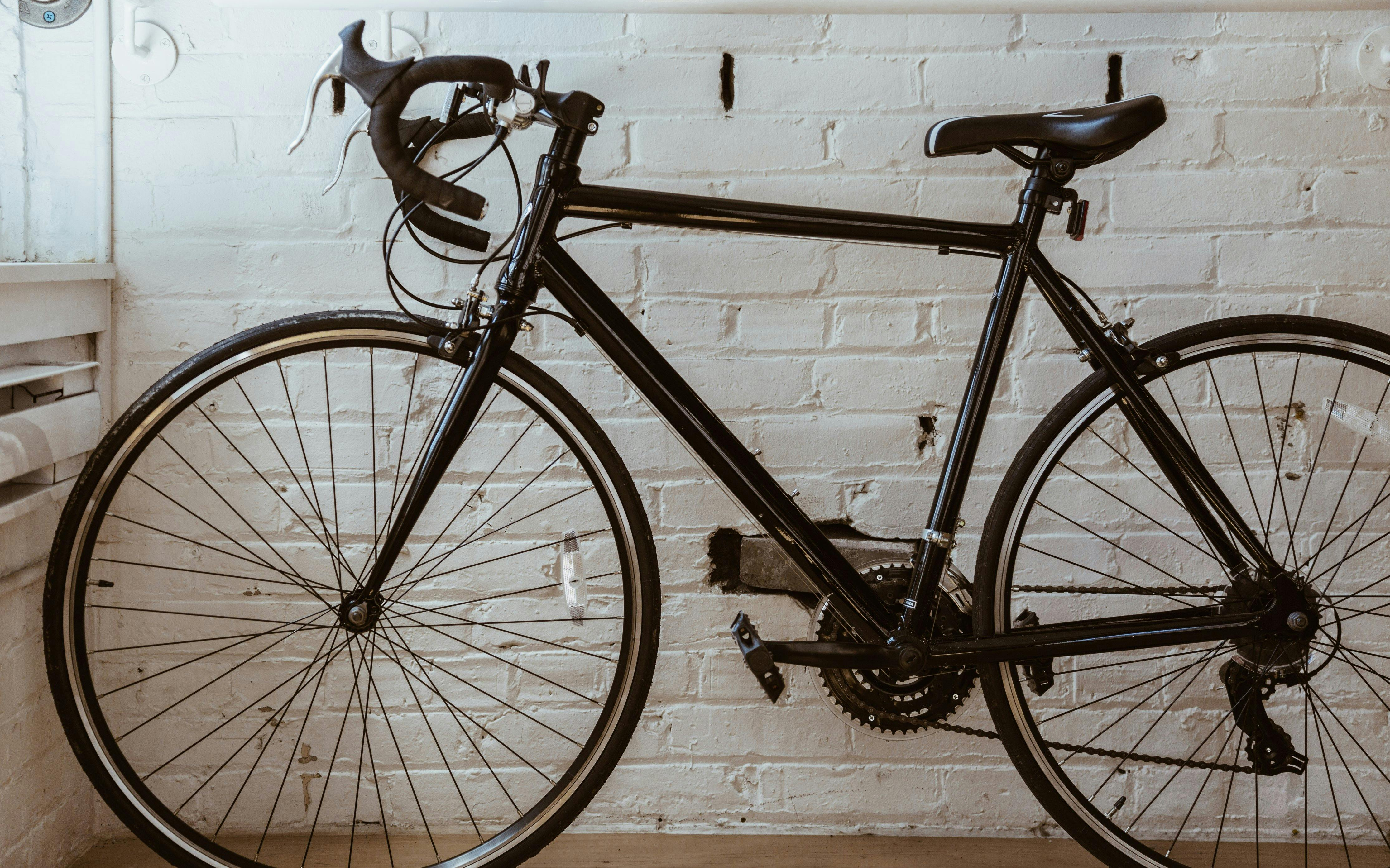
Ceiling-mounted hangers excel at preserving floor space and can hold multiple bikes. However, they require a solid ceiling structure and can be challenging to access.
Floor stands offer stability and easy access without the need for installation, making them ideal for temporary solutions, though they consume more space.
Pulley systems are innovative, allowing bikes to be hoisted effortlessly, saving space and reducing strain, but they require a clear vertical path and can be complex to set up.
Each type presents a unique blend of advantages and limitations, ensuring there’s a solution for every cyclist’s storage dilemma.
Choosing the Right Location
Choosing the ideal spot to hang your bicycle hinges on balancing practicality with personal style. For indoor areas, consider a wall in a less frequented part of your home to avoid interference with daily activities. Ensure the space is dry and temperature-controlled to prevent corrosion.
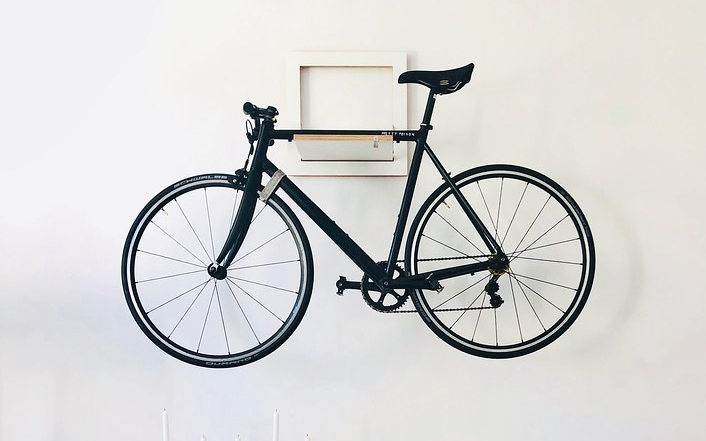
If you’re leaning towards an outdoor setup, opt for a covered area to shield your bike from the elements and prioritize security to protect against theft. The location should offer ample space for easy mounting and dismounting, and if possible, incorporate your bike into the overall aesthetic of your home or garage.
Whether you choose a discreet corner or a display-worthy spot, ensure your bike’s placement is both functional and pleasing to the eye, reflecting your unique taste and cycling lifestyle. Remember, the right location is key to a convenient, accessible, and stylish bike storage solution.
Tools and Materials Required
Securely hanging a bicycle requires specific tools and materials, which are:
- Drill is essential for creating pilot holes in the wall.
- Screws of appropriate length ensure the bike hooks or hangers are firmly attached.
- Bike hooks or hangers are crucial, as they bear the weight of the bicycle.
- Stud finder is invaluable for locating solid wood studs for a secure hold in a drywall.
- Measuring tape is necessary to determine the correct height and spacing for the hooks.
- Level guarantees that the installed hooks are perfectly horizontal.
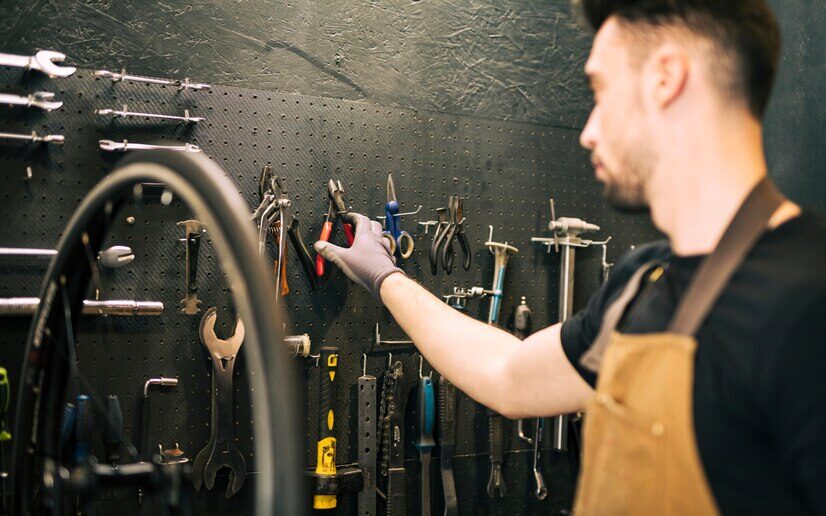
Together, these tools and materials facilitate a stable and accessible bike storage solution. Remember, precision and the right equipment are the keys to a successful bike-hanging project.
How to Hang a Bike? Step-by-Step Guide
Hanging a bike efficiently saves space and keeps your cycle safe from damage. Following are the steps on how to hang a bike from the wall.
1. Measure and Mark the Wall
Begin by selecting the wall area for the bike. Use a tape measure to determine the height at which the bike will hang and mark the spot. Ensure the location allows for easy lifting and avoids obstructing walkways.
2. Locate Studs or Use Wall Anchors
Next, find the studs in the wall using a stud finder for a secure hold; if studs are not available, heavy-duty wall anchors are a suitable alternative.

3. Install Bike Hooks/Hangers
With the location marked, affixing the bike hooks or hangers is time. Choose hardware that can support the weight of the bike and is coated to prevent scratches. Drill pilot holes into the studs or install the wall anchors, then screw in the hooks or hangers tightly.
4. Hang the Bike Securely
Now, carefully lift the bike and place it onto the hooks or hangers. The bike should hang with the frame supported, not just the wheel, to distribute the weight evenly.
5. Test Stability and Adjust if Necessary
After hanging, gently shake the bike to hold it firmly in place. If the bike wobbles or the hooks shift, remove the bike and tighten the hardware or reposition the hooks for better stability.
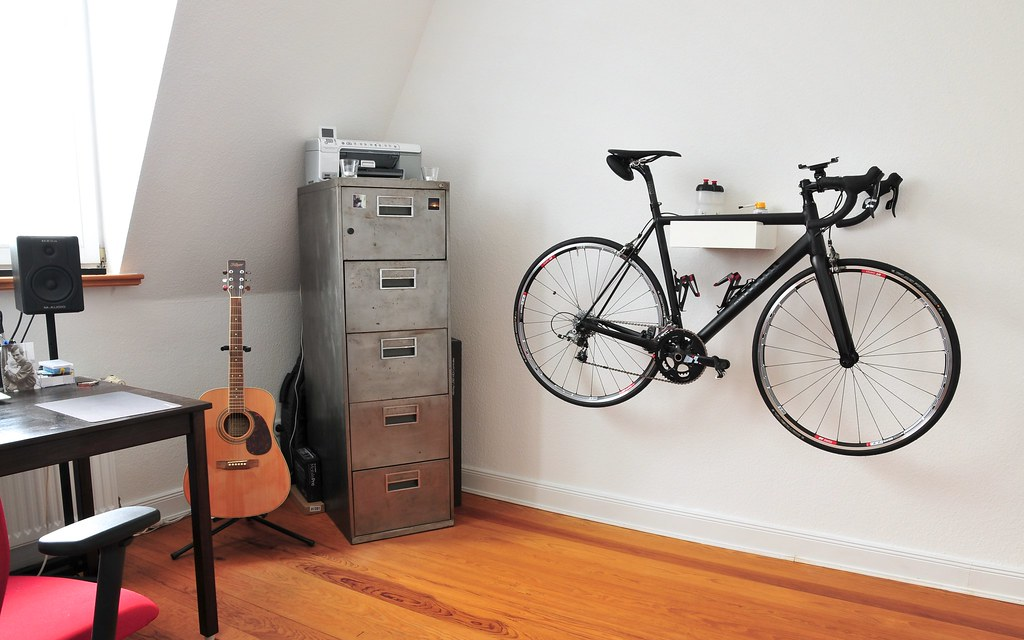
Regularly check the bike’s position and the integrity of the hooks or hangers to ensure ongoing safety. This method is straightforward and can be done with minimal tools, making it an accessible option for cyclists of all skill levels.
Remember, the key to a successful bike hanging is the initial planning and secure installation, ensuring your bike remains in top condition while stored.
Safety and Maintenance Tips
Ensuring the safety of your bicycle while it’s hung and maintaining both the bike and the hanging system is crucial for longevity and functionality. When hanging your bike, always lift it by the frame rather than the wheels to prevent warping.
Position the bike so that it does not obstruct walkways or doorways, reducing the risk of accidents. To remove the bike, support the frame with one hand while gently lifting it off the hooks with the other.
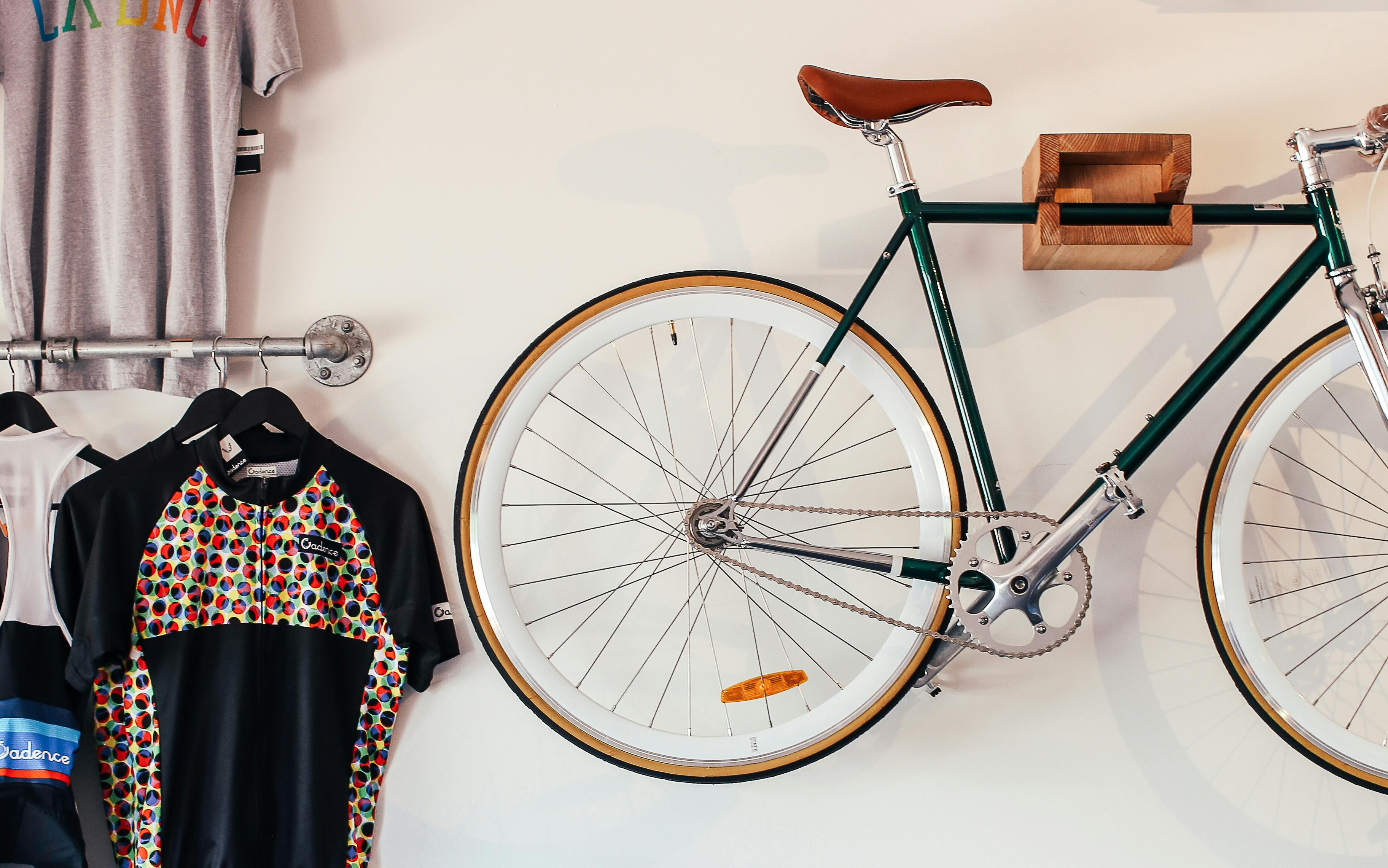
Regularly inspect the hooks and wall mounts for any signs of wear or damage, and tighten any loose components immediately. For the bicycle, check that all parts are secure before and after hanging, as the position can cause components to shift.
Clean the bike regularly to prevent dust accumulation, which can affect its performance. Lubricate the chain and check tire pressure to ensure the bike is ready for use when taken down.
By following these tips, you can keep your bike in optimal condition while also ensuring the safety and integrity of the hanging system. This proactive approach to maintenance will extend the life of your bicycle and provide peace of mind that it is stored securely.
Is it OK to Hang Bikes by the Wheels Upside Down?
Hanging bicycles by the wheels or upside down is a common storage method that can save space and protect the bike from damage.
This approach is generally considered safe for most bicycles, as the wheels are designed to withstand the weight of the rider and the forces encountered while riding, which are significantly greater than the force of the bike’s weight when hung.
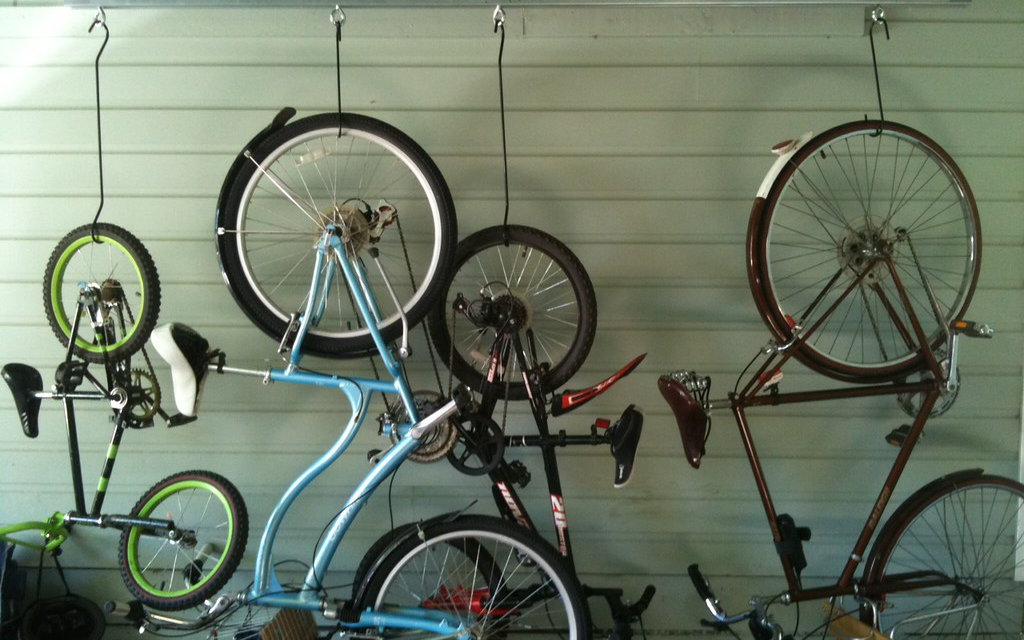
However, it’s important to use proper hooks that support the wheel without causing damage to the rim or spokes. Additionally, for bikes with hydraulic brakes, hanging upside down may cause air bubbles to move into the brake lines, potentially affecting braking performance.
It’s advisable to check the manufacturer’s recommendations, as some may advise against this method for certain models. Regular maintenance checks are essential to ensure that hanging the bike has not adversely affected any components.
By following these guidelines, cyclists can hang their bikes by the wheels or upside down with confidence, knowing that their bicycle is stored safely and ready for their next ride. This method is beneficial for those with limited storage space, allowing for an organized and efficient way to keep bicycles in small areas.
Conclusion
In conclusion, hanging a bike is a practical solution for space management and bike protection. This guide has outlined the essential steps on how to hang a bike to ensure your bike is suspended safely and securely.
By following these instructions, you can confidently store your bicycle, maximizing your living area while safeguarding it from potential damage. We encourage you to apply this guide to effectively hang your bike.
We value your experiences and insights; please share your feedback or any questions you may have about this process. Together, we can enhance our bike storage solutions and enjoy a clutter-free environment.
FAQs
Use adhesive hooks or tension-mounted bike racks to hang bikes without drilling.
Opt for ceiling hooks, wall-mounted racks, or freestanding bike stands in apartments.
Check the weight limit of hooks; typically, they can hold up to 50 pounds.
Hanging by the frame is safe; ensure even weight distribution to avoid damage.



